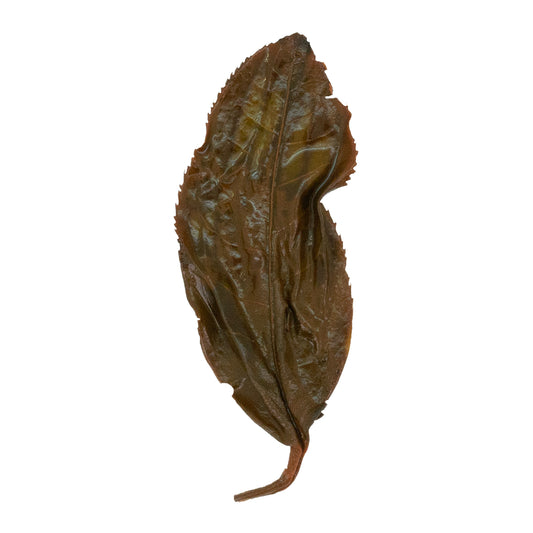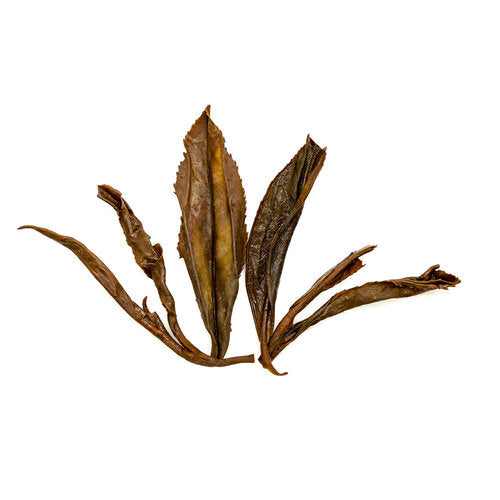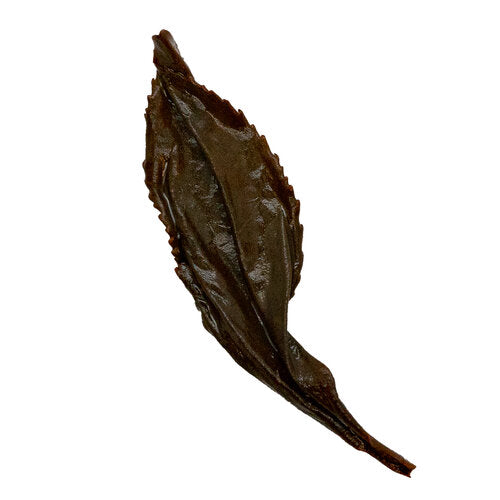History of Red Tea
Unlike other loose leaf teas, Chinese red tea has almost a linear history that's simple yet profoundly international and impactful. The world's oldest red tea is Zheng Shan Xiao Zhong, aka Lapsang Souchong. The origin of Xiao Zhong is not very clear, with its birth estimated from 300-500 years ago. Before the 19th century, it was the only known red tea (and many still argue it was Wu Long then). In fact, Zheng Shan Xiao Zhong (Lapsang Souchong) was so singular in its existence, the name - only given after other red teas started to come about - literally means THE small-leaf tea from THE mountain, to distinguish itself from the rest. Zheng Shan Xiao Zhong was the tea that Robert Fortune took from the still off-limits-to-foreigners origin of Tong Mu to India and what later became Darjeeling, ending China's monopoly over tea in the late 1800s.
Exporting Red Tea Leaves from China
Because red tea was long viewed as a "messed-up" green tea by Chinese connoisseurs, its spread and production were primarily organized for exportation – quite a different route from the teas meant for Chinese aristocracies. This is a crucial distinction as it sets the parameter for developing red tea's terroir and making technique. As beloved and popular as Xiao Zhong was in Europe, it has severe production and transportation limitations due to its fantastic but secluded location. The first Xiao Zhong substitute for organized tea production and exportation was Ning Hong – red tea from Xiu Shui, a city 360 miles northwest of Tong Mu, with easy access to waterways. Built upon Xiao Zhong's explicitly-made techniques for the Western market, Ning Hong went through a unique process called "Gong Fu," opening an era of Gong Fu red teas. From the late 18th to 19th century, multiple locations in China took turns establishing themselves as the central hub for exporting red tea leaves. Most notably are the Fu Jian Gong Fu Trio: Zheng He Gong Fu, Tan Yang Gong Fu, Bai Ling Gong Fu, and Qi Men Gong Fu, known in the West as Keemun.

The Rise of Red Tea Popularity in the West
Throughout the development of red tea - its popular rise in the West and the rest of the world, and its direct cause of the Opium War (which marked the decline of Imperial China) - few Chinese drank red tea.
Red tea remained primarily an export tea that sold for a lower price than other categories of tea in China up until 2005. That year, a new red tea called Jin Jun Mei, from the fateful location of Tong Mu (home to Xiao Zhong), was created using only single buds and debuted with some say the most genius marketing tactic in Chinese tea history. Selling for a couple thousand USD a pound, Jin Jun Mei started the Red Tea Renaissance. Since then, Chinese connoisseurs have begun to appreciate red tea with enthusiasm unseen before, reviving many historical red tea regions and inspiring a few new ones, thus bringing the overall price of red tea up in China.
Green Tea vs. Red Tea?
Red tea is a category of tea just like any other. Green tea usually tends to be the least oxidized, whereas red tea is fully oxidized. This causes their vast difference in flavor, liquid color, and leaf color.
Best Practices for Making Red Tea
-
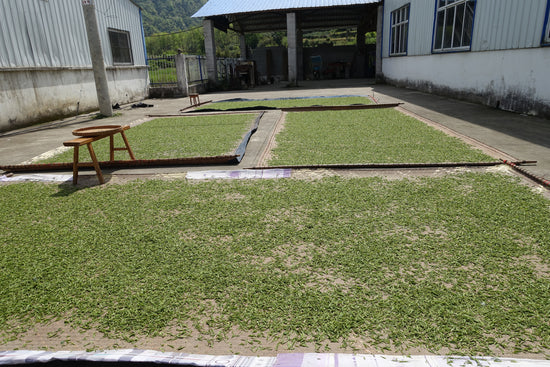
Wilting
After the fresh teas are picked, the leaves are left in a cool, shaded area to slowly lose moisture. Some big leaf varietals are also sun-wilted first, which could take many hours. Most makers now use oxidation beds to wilt the tea, drastically accelerating the process and compromising the quality.
-

Rolling
After the stems have lost enough moisture to snap, the wilted leaves are rolled vigorously to break the membranes sufficiently. This allows complete oxidation that will facilitate the fermentation later on. Red tea leaves are rolled for the most extended time among all teas, often for over an hour.
-

Fermentation
The rolled leaves are shaken loose, evenly layered into a bamboo basket, and then covered with wet clothes.
There are two methods of fermentation, warm and cold. Cold fermentation is when the tea is left at room temperature overnight, usually cold in tea country's spring. Warm fermentation is when the tea is placed into an enclosed space with a maintained amount of moisture and temperature, which can be done through charcoal ash and water bin or by machine.
Wet fermentation is a new and controversial third method of adding moisture directly to the leaves. The time to ferment the tea varies on the environment. It can be as little as two hours or as long as over ten.
-

Picking
There will always be strings that are not fermented, which will affect the flavor of the final tea. While the tea is still wet and the discoloration is easier to see, a tedious step takes place where greener leaves are picked out.
-
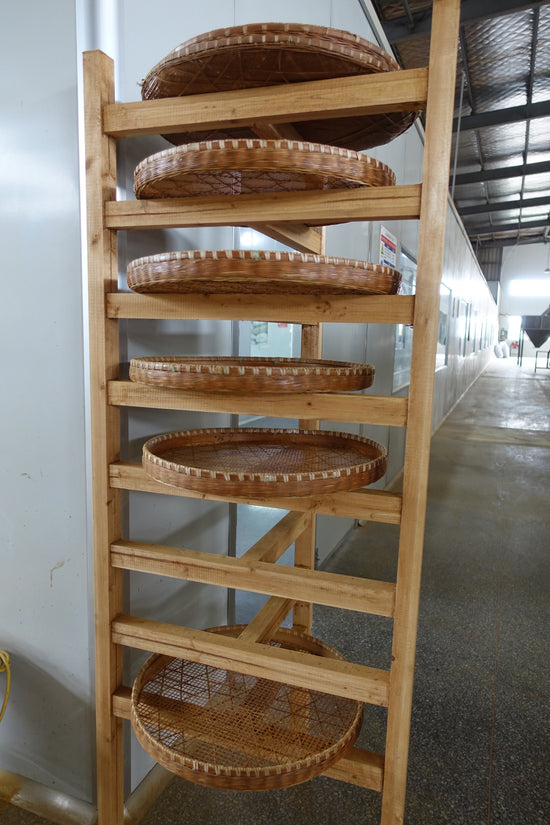
Baking
The teas are then evenly spread on baking trays and baked dry in the oven or over charcoal ash. Some are also lightly dried and rubbed in the wok first for shine and aroma. But, the tea temperature at no time should reach higher than 175-185F.
-
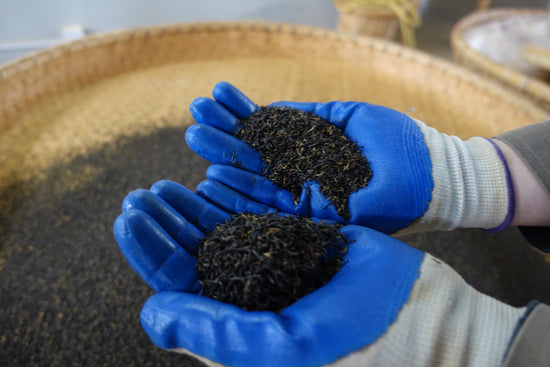
Ti Xiang
This baking technique enhances and purifies the tea's aroma without altering its original flavor profile. It is usually done at least three weeks after the tea has been baked. It is a tricky step that many opt to skip because it can quickly ruin an otherwise mediocre tea if not done correctly. On the other hand, sometimes a red tea can be Ti Xiang twice, usually with three weeks in between.
Gong Fu Hong Cha
While it is also called "gong fu," the term is not to be confused with either the martial art (written differently in Chinese) or the brewing style called Gong Fu Cha. Gong Fu in Chinese means time and effort, so it is not a surprise that it is used to describe the following time-consuming tea-making techniques. Traditionally, after a red tea had been dried, it is broken into small segments using Da Dai.
Da Dai: This is a highly skilled and exciting step where a tea maker swings a bag of tea in rhythm to make contact with a stone placed on the ground. If not done correctly, the tea turns into dust, and the person can hurt their back. However, when done expertly, the teas are broken following the natural way a bud and leaf would fall off the stem, with rounded edges. It is a disappearing art; nowadays, most loose leaf tea makers chop the teas into smaller sizes using a safe and fast machine.
The Refining Process: The broken teas are sorted multiple times according to length and width into the many grades the tea maker sells. Traditionally, this is done using bamboo trays woven with different slots on the bottom, so only the desired size falls through. It is another highly skilled step that is very time-consuming and can ruin the tea if not done correctly. Most teas are now sorted by machine. The "refining" steps were necessary to make Gong Fu Hong Cha because mass production and exportation called for standardization in the tea's flavor and price. Counterintuitively, the most traditional red teas are broken because it was a tea made with a defined end purpose in mind – mass production. It was the reason that made red tea famous internationally and simultaneously dismissed by domestic connoisseurs for centuries. This is where the topic "does traditional mean better" should be debated, or even more importantly, how do we carry on and improve without forgoing tradition.
Famous Chinese Red Teas: Zheng Shan Xiao Zhong (Lapsang Souchong) Red Tea
For a while, there was only one Zheng Shan Xiao Zhong; in the past decade, there have been multiple styles of teas coming from the same region that a list is needed to understand what really is a Zheng Shan Xiao Zhong. Zheng Shan Xiao Zhong, and its related teas, come from the restricted national reserve area near Tong Mu Guan, with two villages within the checkpoint being the most famed – Gua Dun and Ma Shu.
Everyone not native to the villages within the area needs a special permit to go inside, and it is entirely off-limits to foreigners. An overwhelming majority of Zheng Shan Xiao Zhong both in the Chinese and overseas market are NOT from Zheng Shan, which is part of the tea's name to signify the importance of its location. In the most traditional sense, Zheng Shan Xiao Zhong means a smoked broken red tea made with Qing Lou. In layman terms, Qing Lou actually means a pleasure house/brothel (yes, there are many Chinese jokes about this); in the tea profession, it is the name of a unique smokehouse built for making Xiao Zhong.
The house is three stories high, with flexible bamboo sheets tiling its floors - one has to be careful and strategic walking on it to not fall through because it is not solid ground. Down below, the Qing Lou is where a combination of local pine needles and pinewoods are burned, and the smoke is channeled through brick channels similar to the underground structure of a Roman bath. Tea trays, depending on the stages of their making (wilting, drying, smoking), are "stuck" onto the wooden ceiling shelves right below each bamboo tile to be gently "flavored" by the smoke that comes up through spaces between the bamboo weavings.
The real Zheng Shan Xiao Zhong was facing an unappreciative market in the 90s and early 2000s. Many criticized its inferiority because it is a broken tea and is flavored (many claim it should not be considered an authentic tea). The following variation of Zheng Shan Xiao Zhong since then was created with the debut of Jin Jun Mei, pushing red tea to a new height of awareness.
Variations:
- You Yan Xiao Zhong: This is the only kind that resembles the traditional Xiao Zhong where the tea is smoked.
- Zheng Shan Xiao Zhong Smoked and Broken: Varies grades (consider this a prototype of Gong Fu Red Tea).
- Zheng Shan Xiao Zhong Smoked but not Broken: More common now with less requirement on the facility, but a Qing Lou is still needed.
- Wu Yan Xiao Zhong: Zheng Shan Xiao Zhong that is not smoked and not broken.
- Chu Kou Xiao Zhong: This is a touchy point, but there's a Lapsang Souchong directly smoked with pine grease or added smoke flavoring for export-only teas. It's easily identifiable with overly pungent smokiness. This tea is not sold nor drank in China.
- Jin Jun Mei: Single bud red tea
- Yin Jun Mei: Red tea with one bud and one leaf
- Xiao Chi Gan: Red tea with one bud and two leaves
- Da Chi Gan: Red tea with three leaves
Famous Chinese Red Tea: Qi Men Hong Cha (Keemun) Red Tea
Known for the outstanding fragrance that's unrivaled by any other red tea since its creation, Qi Men has occupied first place among red teas. It is also the only red tea that has ever made China's Ten Famous Teas list – a prestigious title. Qi Men is a township in the Yellow Mountain range, An Hui Province, and the red teas from the region are often referred to as Qi Hong. The top prized locations in Qi Men are Li Kou, Shan Li, Ping Li - with Li Xi, Gu Xi, Ruo Keng of Li Kou demands the highest prices, in the said order. Qi Hong started as a Gong Fu Red Tea and is still the most mature with its techniques, such as Da Dai. Since the privatization of tea making in the 80s and 90s, Qi Hong had been continuously reinventing itself to keep up with the market and work around the limitation of farmers' tea-making capacity (Gong Fu Red Tea needs space and additional labor).
Current Styles:
Qi Men Gong Fu: Broken and sold in various grades.
Hong Mao Feng (Red Mao Feng): Red tea with minimum shape making (all red teas must be rolled). It is one of the most popular forms of Qi Hong right now, and also a rough tea for making Gong Fu Red Tea.
Hong Xiang Luo: A red tea rolled into a spiral shape, its name drew inspiration from the famous green tea, Bi Luo Chun.
Hong Song Luo: A red tea made into a pearl shape, its name drew inspiration from the legendary tribute tea in Ming Dynasty, Song Luo. The indigenous varietal of Qi Men is Chu Ye, one of the most studied group varietal of tea, thanks to Qi Men being the home to An Hui Tea Research Institute (which moved to Tun Xi early 2016). Typical clone varietals of Qi Hong are Hong Qi #1 and Da Bai.
Famous Chinese Red Tea: Dian Hong
Yun Nan Black: Every Chinese province has a one-word (single syllabus) acronym. For Yun Nan, it is Dian. Hong means red. Because red tea is known as black tea in the West, the translation for Dian Hong, though quite literal, is confusingly Yun Nan Black. As the name suggests, Dian Hong comes from Yun Nan. In the video below, you can see Yunnan Red Tea being made.
Though Dian Hong is a newcomer to the red tea scene - created in 1939 - it is currently among the most popular red teas from China. Though initially developed in Feng Qing of Yun Nan, Dian Hong is now produced throughout the province. Dian Hong's price hierarchy currently follows the same convention as Pu Er, leading by terroir, then the age of the tea tree, then crafting. Because the varietal of Pu Er is closely related to the age of the tea tree, it is an assumed factor. The general location reference of Dian Hong in the name suggests that it is a tea with lots of details yet to be classified and standardized, demanding a generally lower price than other red teas. Dian Hong, by default, is a big leaf varietal red tea that takes a string shape. It is usually known for having more body than its small leaf peers.

One More Note
Though each style of red tea has its own characteristics, there's still a consented flavor note hierarchy of red tea, following tea's natural fermentation cycle.
They are listed below as a general guideline, in order:
1. Longan
2. Dry Red Dates
3. Yam
4. Fresh Red Dates (slightly sour)


